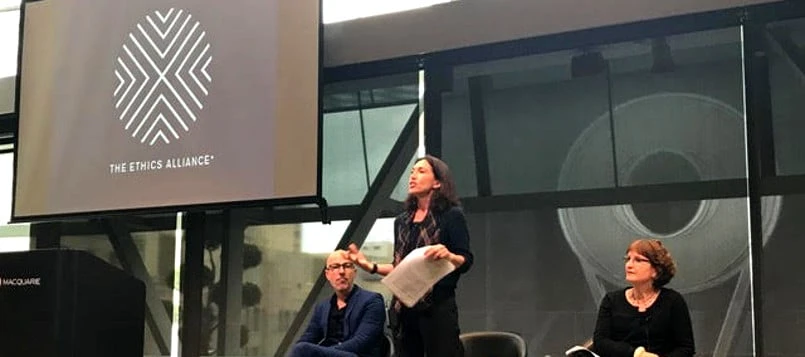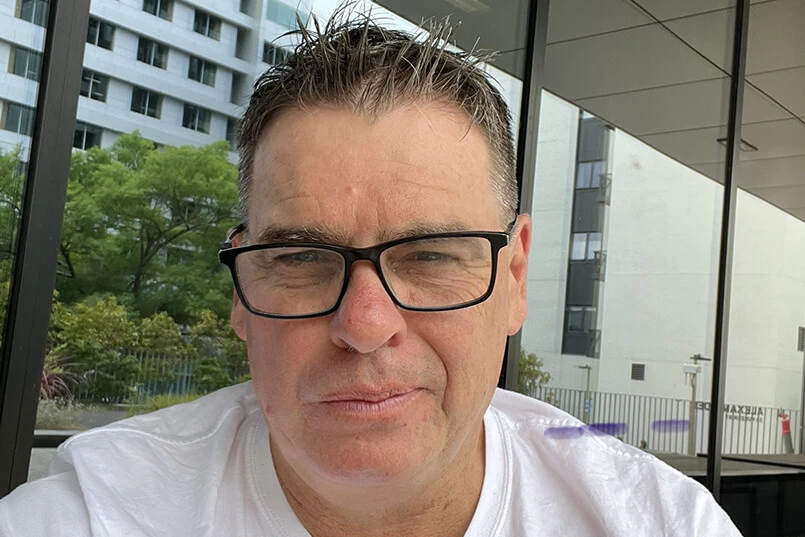I recently attended The Ethics Alliance Event on Making Quality Decisions.
This event previewed The Ethics Alliance’s new Quality Decision Making tool which has been developed to help guide and support people through challenging business decisions.
The event was thought provoking through the use of tangible applied real world examples of both personal and challenging business decisions.
Case studies were used to illustrate the decision process that should/could have happened and what business improvements have been made as a result.
Why is Ethics important?
The Ethics centre in their definition of Ethics points out that ‘Ethics is at the core of everyday life. We ask ethical questions whenever we think about how we should act’.
While you may be thinking “Isn’t this philosophy? How is this relevant for business and marketing?” It is key to realise that:
- Ethics is part of how your employees are making business decisions. Are your employees equipped to make decisions balancing their personal ethics with your company’s values?
- Consumers are caring more about companies having good business ethics. Social media makes the impact of unethical decisions that much larger.
How can ethical decision making be applied in business?
Company value statements define the ethical business framework employees work within. However, for most organisations company values are not widely known or lived in practice. They are often just a tick box as part of contractual renewals and hidden somewhere on a company’s website and/or intranet.
These can be brought to the forefront and discussed and workshopped using an ethical framework. The Ethics Centre presented the parameters of their decision-making tool which includes:
E= Embody. Being present in your body/in the decision
T= Traverse. Understanding the terrain/context of the decision
H=Humanise. Looking at the key relationships and stakeholders
I= Imagine. Looking at/imagining the alternatives
C= Challenge. Challenge your options
S=Sync. Bringing it into action
This can be applied in practice in either a pre-emptive, live or reflective context:
- Pre-emptive. In preparation for making an ethical business decision. For example, if you are an agency deciding on your programmatic fee model or an advertiser putting together a social media crisis plan.
- In the moment. In an ethical decision-making moment. For example, if you are a bank dealing with some of the revelations from the Royal Commission.
- Reflection. Reflection on previous ethical issues. Reflecting on past issues/crises and learning from these mistakes.
One of the examples workshopped was the 2012 2DayFM English royal family hoax call where the nurse involved, Jacinta Saldana, committed suicide 4 days later. We reviewed and discussed Southern Cross Austereo’s company values to understand why this hoax went to air. The discussion focussed on the challenges faced by the team in balancing ‘doing the right thing’ vs ‘maximising ratings’.
This is a dilemma common to a lot of companies and industries – certainly very apparent when we look at what has been unearthed from the current Royal Commission into banking.
To be able to make ethical business decisions it is key to both have and understand a business’s value statement and ensure employees understand and are able to interpret this and align it to their own values. It is also key to ensure that internal cultures, structures and employee incentives align to this. Westpac for example as an outcome of the Banking Royal commission is encouraging staff to flag risks which was previously culturally discouraged.
The hands-on approach of having an ethical decision making framework and using this to workshop actual company case studies can be applied to many examples across marketing, media and advertising.
Marketing
Marketers are faced with multiple ethical decisions often on a daily basis. The below are just a few:
- Supplier selection
- Client/agency interaction – Darren Woolley outlines some good examples in The ethics of Client / Agency behaviour: What is acceptable and what is not? .
- Industry specific communication issues e.g. Appropriate models in Fashion, Health related advertising.
- Social media – how to respond in a crisis situation
- Customer service – how to respond to individual customer complaints and issues
The opportunity for marketing is to upskill marketing staff in their ethical decision-making capability to be able to apply company values to real world marketing decisions.
This can then be taken a step further by translating company value statements into actual marketing plans.
Media
There has been a lot written and unearthed about unethical practices by media agencies in terms of undisclosed fees, kickbacks, media biases and quality of media issues. There have also been points raised about the pressure media agencies are under to recoup profit margins which they have lost from other areas.
This creates an environment in which unethical decisions are more likely to be made due to this pressure to produce profit results.
The opportunity for media agency owners is to revisit their value statement and look at whether it is representative of how they want to be and are positioned.
The Ethics workshop showcased that work-shopping a real world example from your own company can really help in exploring and understanding the different pulls in decision making and what impact a company’s vales has on this process. The new Ethics Alliance’s Quality Decision Making tool will help provide a framework to do this.
For example, as a media agency there would be value reviewing programmatic and technology fee structures using some of the below queries:
- Would I be happy with this decision to be headlining the news tomorrow?
- What will this action do to my character or the character of my organisation?
There is a good chance if you can’t comfortably talk about your fee margins with clients, the media or the public that it isn’t representative of your personal or company values.
Advertising
Advertising agencies like media agencies have also come under scrutiny for ethical behaviour. Darren outlines some good examples in The ethics of Client / Agency behaviour: What is acceptable and what is not? .
The opportunity for advertising agencies is to re look at their value statements and see whether these do align with how they do and want to act. The next step is then to instigate training with agency staff to empower staff to be able to align their personal ethics with the corporate values and speak out if they are not comfortable.
Take outs
Companies more and more want employees to bring their whole self to work not just their work persona. In doing this companies need to recognise that as people we all have our own inbuilt ethical values that guide our decision making. However, in a work situation our decisions are also guided by employee incentives, company values and company culture.
To align these and ensure the best corporate decisions are made requires training. And like all training work-shopping real applied relevant examples is a great way to do this.
The Ethics Centre’s new Quality Decision Making tool will be available later this year for Ethics Alliance members. We encourage you to contact The Ethics Centre or contact us to find out more.
In the meantime The Ethics Centre’s website provides some further questions to help guide ethical decision making. Another free resource is The Ethics Centre Ethi- Call which will help guide you through either a personal or professional ethical dilemma.
TrinityP3 is a corporate member of the Ethics Alliance – view our business partners here.
TrinityP3’s Media Transparency, Performance and Value Assessment takes a holistic look at the operation of your media agency, assessing against best practice at every stage of the journey. It aims to give you the tools to improve the output of your media agency.
Why do you need this service? Read on to understand more




